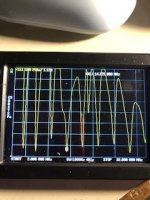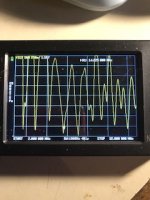AC9KH
Member
If anyone is interested in making a high power 49:1 transformer this guy has figured out the recipe and has a good video on the details. Notice he is not using 43 mix cores when stacking three.
That's fine for higher frequencies. But if the desired band of operation is 80m, I'd tend to stick with -43's due to their higher inductance. They magnetize easily @ 3500-4000 KHz with no eddy current losses and run cool even with the amp on them. If you plan on running 7000 KHz and above, then -52's (or even -61's) are a better choice. -61's are not going to work for 3500 KHz, -52's are marginal because they don't magnetize as easy. What the guy in the video built is a transformer primarily for 7000 KHz as the fundamental.
Again, in my experience there is no such thing as an "all band" antenna that works good. Building a low-Q antenna system just to get SWR dips on all the bands is the wrong way to go about it because the bands are not exact harmonics. The bottom end of 80m lines up with the bottom end of 40m, for instance, but the top end of 75m does not line up with 40m because the 75/80m band is 500 KHz wide. So if building a EFHW for 80m, make it high-Q so it's efficient, but expect to use an antenna tuner for 75m. If you build it with lots of capacitive coupling in the transformer just to get a flat SWR across 80/75, it's not going to be as efficient and expect to get considerable core heating even at 500 watts.
This is why I offered to wind a transformer for Mr. Crowling. He can't seem to get the desired result, so he's either got unreasonable expectations of a no-tuner "all-band" EFHW, or his cores are no good. I can wind a test transformer, throw the scope on it tell you within minutes if those cores are -43's just based on the phase shift between primary and secondary.





